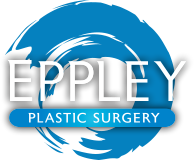What Is The Best Way To Do My Jaw Augmentation?
Q: Dr. Eppley, Hello, I’m seeking professional guidance regarding a recessed chin and a weak jawline, particularly in relation to the gonial angle. I also have noticeable facial asymmetry—specifically, the right side of my face shows a more recessed cheekbone and a weaker jaw angle compared to the left. I’d appreciate help understanding the underlying causes of these issues, as well as recommendations for treatment options. I’m especially interested in learning about potential procedures, associated costs, and any risks involved. Additionally, I’d like to know whether small, targeted implants could improve the aesthetic outcome, or if a full wrap-around jaw implant would be more effective. I look forward to your feedback and guidance.
A:Thank you for your inquiry and sending your pictures. You have two facial issues which are somewhat related, an underdeveloped lower jaw and congenital facial asymmetry with the right side being less developed than that of the left. The bony basis for this asymmetry Will become clear if you look at the 3-D CT scan of your face. That being said the first question is that of what are your aesthetic goals for your underdeveloped lower jaw which fundamentally comes down to isolated chin augmentation or a complete jaw augmentation. (see attached imaging) if you didn’t care about the facial asymmetry then that would be a very basic decision of how much effort do you want to put into the lower facial reshaping for what degree of change. The facial asymmetry issue, however, is a game changer in regards to that decision. This is because lower drawl is asymmetric and There’s going to be no successful way to treat that short of a custom implant design approach which then speaks to the aesthetic need for total lower drawl augmentation. Undoubtably your facial asymmetry has a cheap component to it as well and this also would require a custom implant approached to treat.
The concept of the spot implants to treat your jawline augmentation and particularly your facial asymmetry would not be a successful approach as the fundamental problems are not isolated or spot in nature. Surgeons try that approach all the time and all that ends up happening is a different form of facial asymmetry is created and the patient eventually has to graduate to a more comprehensive approach using a 3-D CT scan as the guide for treatment planning.
Dr. Barry Eppley
World-Renowned Plastic Surgeon

North Meridian Medical Building
Address:
12188-A North Meridian St.
Suite 310
Carmel, IN 46032
Contact Us:
Phone: (317) 706-4444
WhatsApp: (317) 941-8237
